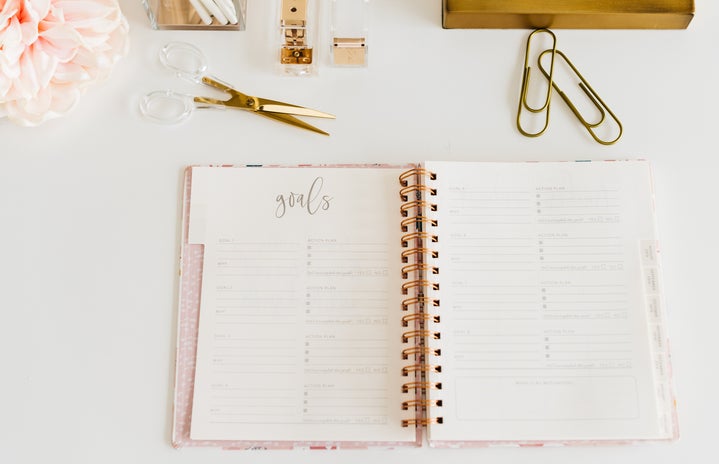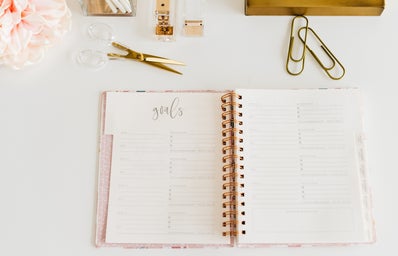After being a student for the past 14 years, you would think I would have discovered a reliable method to balance my academic responsibilities with my personal life. Unfortunately, this has not been the case — until now. To better organize my life and boost my productivity, I tried a number of organizational strategies, and here’s what I found.
Having a Productive Day
There are numerous ways to organize life, and each method offers unique benefits. One approach I explored is the Ivy Lee Method. This technique involves writing down the six most important tasks to accomplish the following day at the end of each night, ordered by priority. The next day, you focus on these tasks one at a time. This strategy effectively reduces “decision fatigue,” saves time and encourages you to prioritize your goals, making it easier to tackle your day head-on.
Psychologically, this approach is supported by the Zeigarnik Effect. This phenomenon demonstrates that planning activities through to-do lists can alleviate the executive burden on the brain by freeing it from the worry of unfinished tasks.
Recent studies have confirmed this effect; for instance, when participants were not allowed to complete a warm-up task, they performed poorly on a subsequent brainstorming activity. The implication is clear: Crossing off even a single item on a to-do list allows individuals to move on more effectively, fostering a sense of accomplishment that propels them toward their next task.
Next, I found a more biological method: using your circadian rhythm, the body’s natural 24-hour cycle of physical, mental and behavioral changes. By identifying peak productivity times throughout the day, one can strategically map their schedule to maximize efficiency during those specific hours.
Having a Productive Work Session
To enhance productivity during sessions of work, I found various time-management strategies. One effective method is the Pomodoro Technique, which divides work into focused, 25-minute intervals (known as “Pomodoros”) separated by short 5-minute breaks. After completing four Pomodoros, you take a longer break of 15 minutes. This structured approach promotes sustained concentration and provides regular intervals for mental refreshment.
Additionally, I looked into the 52-17 Method, which was uncovered by a study conducted by the Draugiem Group. This study tracked employees’ work habits through a computer application, revealing that the length of the workday mattered less than how individuals structured their time. Specifically, those who adhered to short breaks were significantly more productive than those who worked longer hours. The ideal work-to-break ratio was found to be 52 minutes of focused work followed by a 17-minute rest, reinforcing the value of taking time to recharge.
Practicing a Productive Day
To determine which method worked best for organizing my daily life, I conducted a personal experiment over three weeks. In the first week, I opted for an unstructured approach — going with the flow and tackling tasks as they arose. While I enjoyed the sense of freedom this provided, I often felt an underlying sense of anxiety about whether I was truly making the most of my time.
In the following week, I switched to creating a detailed to-do list. As new tasks emerged, I added them to my list and prioritized them accordingly. This method proved to be very efficient, as I felt more in control of my time and accomplishments.
For the third week, I embraced RISE, an app that uses circadian rhythms and other health-related factors to tell you about your energy levels and help improve your sleep habits to have better productivity. It told me the best time to fall asleep, the best time to wake up to feel refreshed and the peaks of my energy levels where I would be the most productive. I tried to section out the hours that it told me that I would be productive to get work done. I really liked this method because I genuinely felt like I was able to be productive during these hours. I felt like it aligned well with my life, but I am critical that this may be the placebo effect. Perhaps I only felt productive because the app told me I should be.
Practicing a Productive Work Session
I tried both the Pomodoro Method and the 52-17 method. With the Pomodoro method, I felt like when I was on a roll, I would have to stop my productive streak and take a break when I could have been working. With the breaks, I found that they were too short for me to feel refreshed. With the 52-17 method, I felt that I was able to get a good amount of work done while also getting a decent amount of time for a break after.
So What Now?
Overall, I felt that using a to-do list to organize my day and the 52-17 work method was the most efficient. I have now incorporated the insights I’ve gained to lead a more organized and fulfilling college life. The combination of structured planning, prioritization and time management not only improved my efficiency but also enhanced my peace of mind.


